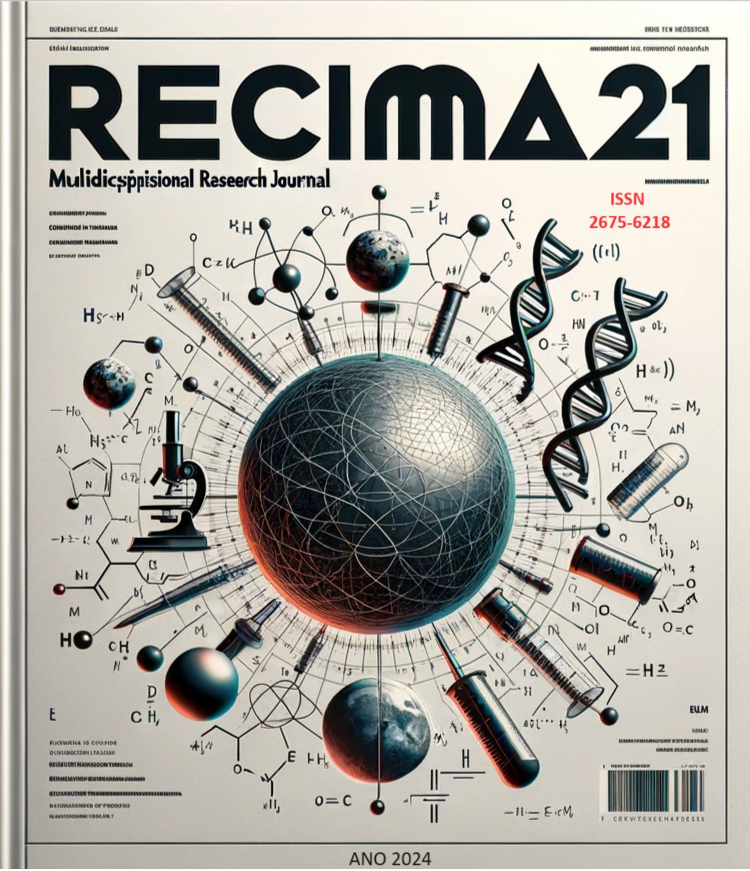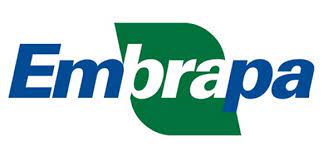CEFALEA POSPUNCIÓN DURAL EN ANESTESIA RAQUÍDEA: REVISIÓN BIBLIOGRÁFICA SOBRE INCIDENCIA, FACTORES DE RIESGO Y ESTRATEGIAS DE TRATAMIENTO
DOI:
https://doi.org/10.47820/recima21.v5i6.5321Palabras clave:
Cefalea postpunción dural. Anestesia raquídea. Incidencia, factores de riesgo. Estrategias de gestión.Resumen
La cefalea pospunción dural (CPPD) es una complicación frecuente y debilitante tras la anestesia raquídea, que repercute negativamente en la recuperación del paciente y aumenta los costes sanitarios. Objetivo: Esta revisión bibliográfica pretende abordar la incidencia, los factores de riesgo y las estrategias de tratamiento de la CPPD en pacientes sometidos a anestesia raquídea. Métodos: Esta revisión bibliográfica se realizó mediante una búsqueda sistemática de la literatura científica publicada en los últimos 15 años, abarcando el periodo comprendido entre 2009 y 2024, en las bases de datos PubMed, Web of Science, Scopus y Google Scholar. Los criterios de inclusión fueron estudios originales y revisiones, en inglés, portugués o español, que investigaran estrategias de intervención para la PDPH. Se excluyeron informes de casos, editoriales y estudios centrados en otras condiciones médicas. Resultados y Discusión: La incidencia de la HPPD oscila entre el 0,1% y el 36% y está influida por la técnica anestésica y las características del paciente. Los factores de riesgo son la edad, el sexo femenino y el embarazo. La elección de agujas de menor calibre con punta de lápiz reduce la incidencia de HPPD. Las técnicas de punción guiadas por ecografía minimizan las punciones traumáticas. El tratamiento conservador, que incluye la hidratación y el uso de analgésicos, es eficaz en los casos leves. El parche sanguíneo epidural es el tratamiento de referencia para los casos graves, mientras que los derivados de la cafeína son una alternativa prometedora.
Descargas
Citas
ABRAMS, Winfred B. et al. Management of cervical post–dural puncture headache. Pain Medicine, v. 21, n. 12, p. 3715-3718, 2020. DOI: https://doi.org/10.1093/pm/pnaa298
AL-HASHEL, Jasem et al. Post‐dural puncture headache: a prospective study on incidence, risk factors, and clinical characterization of 285 consecutive procedures. BMC neurology, v. 22, n. 1, p. 261, 2022. DOI: https://doi.org/10.1186/s12883-022-02785-0
ALI, Hassan Mohamed; MOHAMED, Mohamed Yehya; AHMED, Yahya Mohamed. Postdural puncture headache after spinal anesthesia in cesarean section: Experience in six months in 2736 patients in Kasr El aini teaching hospital–Cairo University. Egyptian Journal of Anaesthesia, v. 30, n. 4, p. 383-386, 2014. DOI: https://doi.org/10.1016/j.egja.2014.06.001
AMINI, Nazanin et al. The effect of sumatriptan, theophylline, pregabalin and caffeine on prevention of headache caused by spinal anaesthesia (PDPH): a systematic review. Journal of West African College of Surgeons, v. 12, n. 4, p. 102-116, 2022. DOI: https://doi.org/10.4103/jwas.jwas_183_22
AREVALO-RODRIGUEZ, Ingrid et al. Posture and fluids for preventing post‐dural puncture headache. Cochrane Database of Systematic Reviews, n. 3, 2016. DOI: https://doi.org/10.1002/14651858.CD009199.pub3
ASMARE, Mekuanint; EWNETU, Liyew; GETA, Kumlachew. Epidural blood patch in the treatment of severe post dural puncture headache after spinal anesthesia: A rare case report. International Journal of Surgery Case Reports, v. 95, p. 107256, 2022. DOI: https://doi.org/10.1016/j.ijscr.2022.107256
BANDATMAKUR, Madhav et al. Factors predisposing to post dural puncture headache in children. Journal of Child Neurology, v. 36, n. 10, p. 831-840, 2021. DOI: https://doi.org/10.1177/08830738211007699
BUDDEBERG, Bigna S.; BANDSCHAPP, Oliver; GIRARD, Thierry. Post-dural puncture headache. Minerva anestesiologica, v. 85, n. 5, p. 543-553, 2019. DOI: https://doi.org/10.23736/S0375-9393.18.13331-1
CASTRILLO, Ana et al. Postdural puncture headache: impact of needle type, a randomized trial. The spine journal, v. 15, n. 7, p. 1571-1576, 2015. DOI: https://doi.org/10.1016/j.spinee.2015.03.009
CHEKOL, Basazinew; YETNEBERK, Tikuneh; TESHOME, Diriba. Prevalence and associated factors of post dural puncture headache among parturients who underwent cesarean section with spinal anesthesia: A systemic review and meta-analysis, 2021. Annals of Medicine and Surgery, v. 66, p. 102456, 2021. DOI: https://doi.org/10.1016/j.amsu.2021.102456
DELPIZZO, Kathryn et al. Post-dural puncture headache is uncommon in young ambulatory surgery patients. HSS Journal®, v. 13, n. 2, p. 146-151, 2017. DOI: https://doi.org/10.1007/s11420-017-9541-0
GIRMA, Timsel et al. Incidence and associated factors of post dural puncture headache in cesarean section done under spinal anesthesia 2021 institutional based prospective single-armed cohort study. Annals of Medicine and Surgery, v. 78, 2022. DOI: https://doi.org/10.1016/j.amsu.2022.103729
KADDOUM, Roland et al. Accidental dural puncture, postdural puncture headache, intrathecal catheters, and epidural blood patch: revisiting the old nemesis. Journal of anesthesia, v. 28, p. 628-630, 2014. DOI: https://doi.org/10.1007/s00540-013-1761-y
MARANHAO, B. et al. The association between post‐dural puncture headache and needle type during spinal anaesthesia: a systematic review and network meta‐analysis. Anaesthesia, v. 76, n. 8, p. 1098-1110, 2021. DOI: https://doi.org/10.1111/anae.15320
MASHOUR, George A.; ENGELHARD, Kristin (Ed.). Oxford textbook of neuroscience and anaesthesiology. Oxford: Oxford University Press, 2019. DOI: https://doi.org/10.1093/med/9780198746645.001.0001
MATTURU, Soumya et al. Continuous Spinal Anesthesia Technique After Accidental Dural Puncture. Cureus, v. 14, n. 9, 2022. DOI: https://doi.org/10.7759/cureus.29046
MOORE, Albert R.; WIECZOREK, Paul M.; CARVALHO, Jose CA. Association between post–dural puncture headache after neuraxial anesthesia in childbirth and intracranial subdural hematoma. JAMA neurology, v. 77, n. 1, p. 65-72, 2020. DOI: https://doi.org/10.1001/jamaneurol.2019.2995
MOWAFY, Sherif MS; ELLATIF, Shereen E. Abd. Effectiveness of nebulized dexmedetomidine for treatment of post-dural puncture headache in parturients undergoing elective cesarean section under spinal anesthesia: a randomized controlled study. Journal of anesthesia, v. 35, p. 515-524, 2021. DOI: https://doi.org/10.1007/s00540-021-02944-6
OBERHOFER, Dagmar et al. Incidence and clinical significance of post-dural puncture headache in young orthopaedic patients and parturients. Periodicum biologorum, v. 115, n. 2, p. 203-208, 2013.
OKPALA, Boniface Chukwuneme et al. A double-blind placebo controlled trial on effectiveness of prophylactic dexamethasone for preventing post-dural puncture headache after spinal anesthesia for cesarean section. The Journal of Maternal-Fetal & Neonatal Medicine, v. 35, n. 17, p. 3407-3412, 2022. DOI: https://doi.org/10.1080/14767058.2020.1818719
ONA, Xavier Basurto et al. Drug therapy for preventing post‐dural puncture headache. Cochrane Database of Systematic Reviews, n. 2, 2013. DOI: https://doi.org/10.1002/14651858.CD001790.pub2
ORBACH‐ZINGER, S. et al. Intrathecal catheter use after accidental dural puncture in obstetric patients: literature review and clinical management recommendations. Anaesthesia, v. 76, n. 8, p. 1111-1121, 2021. DOI: https://doi.org/10.1111/anae.15390
OUMER, Keder Essa et al. Incidence and associated factors of post-dural puncture headache among orthopaedic patients after spinal anesthesia: a prospective cohort study. Annals of Medicine and Surgery, v. 85, n. 10, p. 4703-4708, 2023. DOI: https://doi.org/10.1097/MS9.0000000000001167
ÖZCENGIZ, Dilek (Ed.). Güncel Anesteziyoloji ve Ağrı Çalışmaları IV. Akademisyen Kitabevi, 2021. DOI: https://doi.org/10.37609/akya.637
PATEL, Riki et al. A comprehensive update on the treatment and management of postdural puncture headache. Current pain and headache reports, v. 24, p. 1-9, 2020. DOI: https://doi.org/10.1007/s11916-020-00860-0
SCHMITTNER, Marc D. et al. High incidence of post-dural puncture headache in patients with spinal saddle block induced with Quincke needles for anorectal surgery: a randomised clinical trial. International journal of colorectal disease, v. 25, p. 775-781, 2010. DOI: https://doi.org/10.1007/s00384-010-0888-7
SCHYNS-VAN DEN BERG, Alexandra MJV; GUPTA, Anil. Postdural puncture headache: Revisited. Best Practice & Research Clinical Anaesthesiology, v. 37, n. 2, p. 171-187, 2023. DOI: https://doi.org/10.1016/j.bpa.2023.02.006
SIEGLER, Benedikt Hermann et al. Postpunktionskopfschmerz in der Geburtshilfe. Die Anaesthesiologie, v. 71, n. 8, p. 646-660, 2022. DOI: https://doi.org/10.1007/s00101-022-01171-2
SONG, J. et al. Impact of obesity on post-dural puncture headache. International journal of obstetric anesthesia, v. 30, p. 5-9, 2017. DOI: https://doi.org/10.1016/j.ijoa.2016.10.009
SYED, Sumaya et al. Comparison of post-dural puncture headache-incidence and severity in obstetric patients after spinal anesthesia for caesarean section with 25G and 27G quincke needle. Int J Res Med Sci, v. 5, n. 2, p. 596-600, 2017. DOI: https://doi.org/10.18203/2320-6012.ijrms20170158
UPPAL, Vishal et al. Evidence-based clinical practice guidelines on postdural puncture headache: a consensus report from a multisociety international working group. Regional Anesthesia & Pain Medicine, 2023. DOI: https://doi.org/10.1136/rapm-2023-104817
WROBEL, Marc; VOLK, Thomas. Post-dural puncture headache. Anesthesiology and Pain Medicine, v. 1, n. 4, p. 273-274, 2012. DOI: https://doi.org/10.5812/aapm.3610
YOUSSEF, Hamdy Abbas et al. Sphenopalatine ganglion versus greater occipital nerve blocks in treating post-dural puncture headache after spinal anesthesia for cesarean section: A randomized clinical trial. Pain Physician, v. 24, n. 4, p. E443-E51, 2021. DOI: https://doi.org/10.36076/ppj.2021.24.E443
ZEGER, Wesley; YOUNGGREN, Bradley; SMITH, Lynette. Comparison of cosyntropin versus caffeine for post-dural puncture headaches: a randomized double-blind trial. World journal of emergency medicine, v. 3, n. 3, p. 182, 2012. DOI: https://doi.org/10.5847/wjem.j.issn.1920-8642.2012.03.004
ZETLAQUI, Paul J.; BUCHHEIT, Thomas; BENHAMOU, Dan. Epidural blood patch: A narrative review. Anaesthesia Critical Care & Pain Medicine, v. 41, n. 5, p. 101138, 2022. DOI: https://doi.org/10.1016/j.accpm.2022.101138
ZORRILLA-VACA, Andres; HEALY, Ryan; ZORRILLA-VACA, Carolina. Finer gauge of cutting but not pencil-point needles correlate with lower incidence of post-dural puncture headache: a meta-regression analysis. Journal of anesthesia, v. 30, p. 855-863, 2016. DOI: https://doi.org/10.1007/s00540-016-2221-2
Descargas
Publicado
Cómo citar
Número
Sección
Categorías
Licencia
Derechos de autor 2024 RECIMA21 - Revista Científica Multidisciplinar - ISSN 2675-6218

Esta obra está bajo una licencia internacional Creative Commons Atribución 4.0.
Os direitos autorais dos artigos/resenhas/TCCs publicados pertecem à revista RECIMA21, e seguem o padrão Creative Commons (CC BY 4.0), permitindo a cópia ou reprodução, desde que cite a fonte e respeite os direitos dos autores e contenham menção aos mesmos nos créditos. Toda e qualquer obra publicada na revista, seu conteúdo é de responsabilidade dos autores, cabendo a RECIMA21 apenas ser o veículo de divulgação, seguindo os padrões nacionais e internacionais de publicação.

 Clique para ver detalhes
Clique para ver detalhes 











